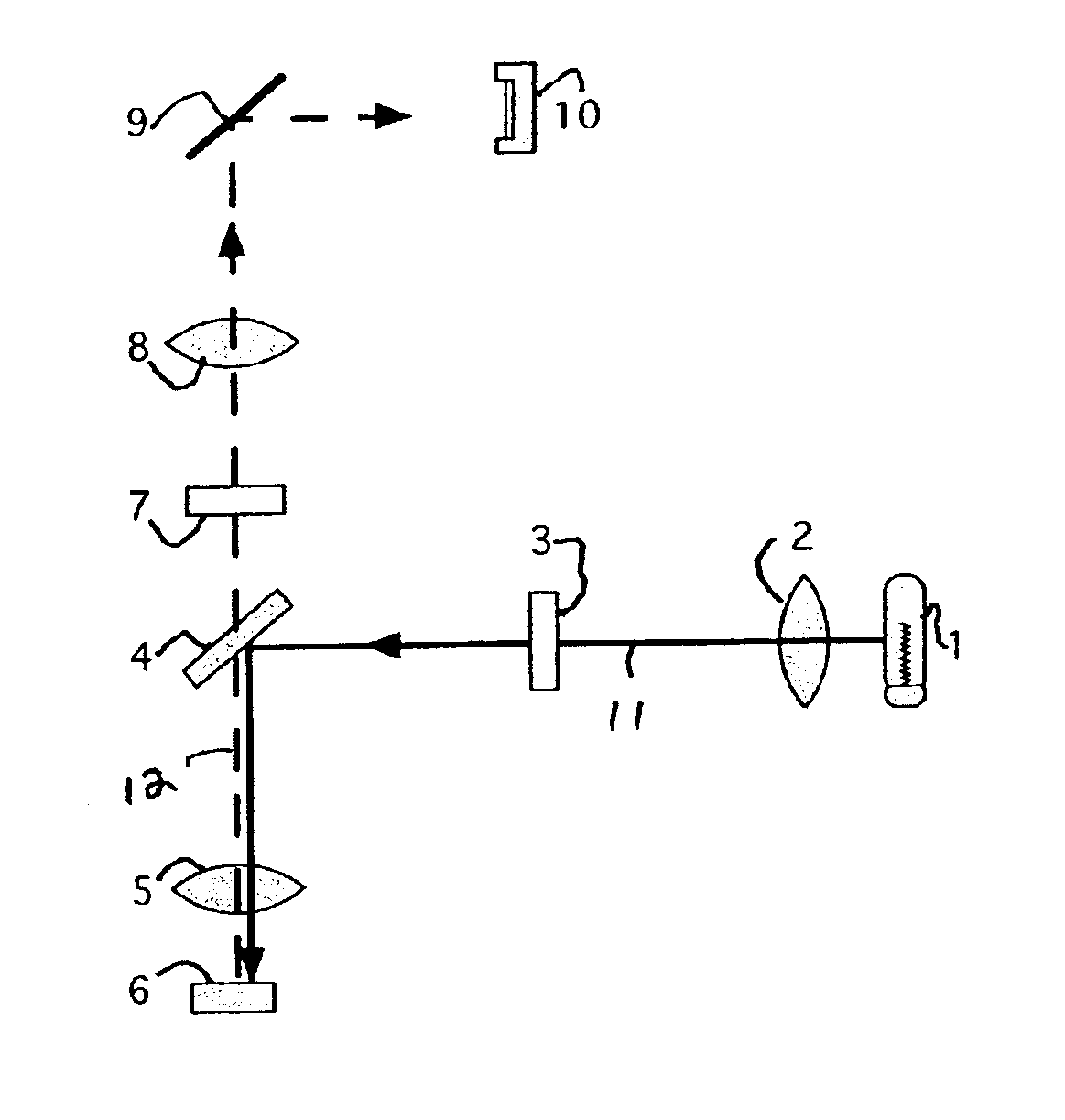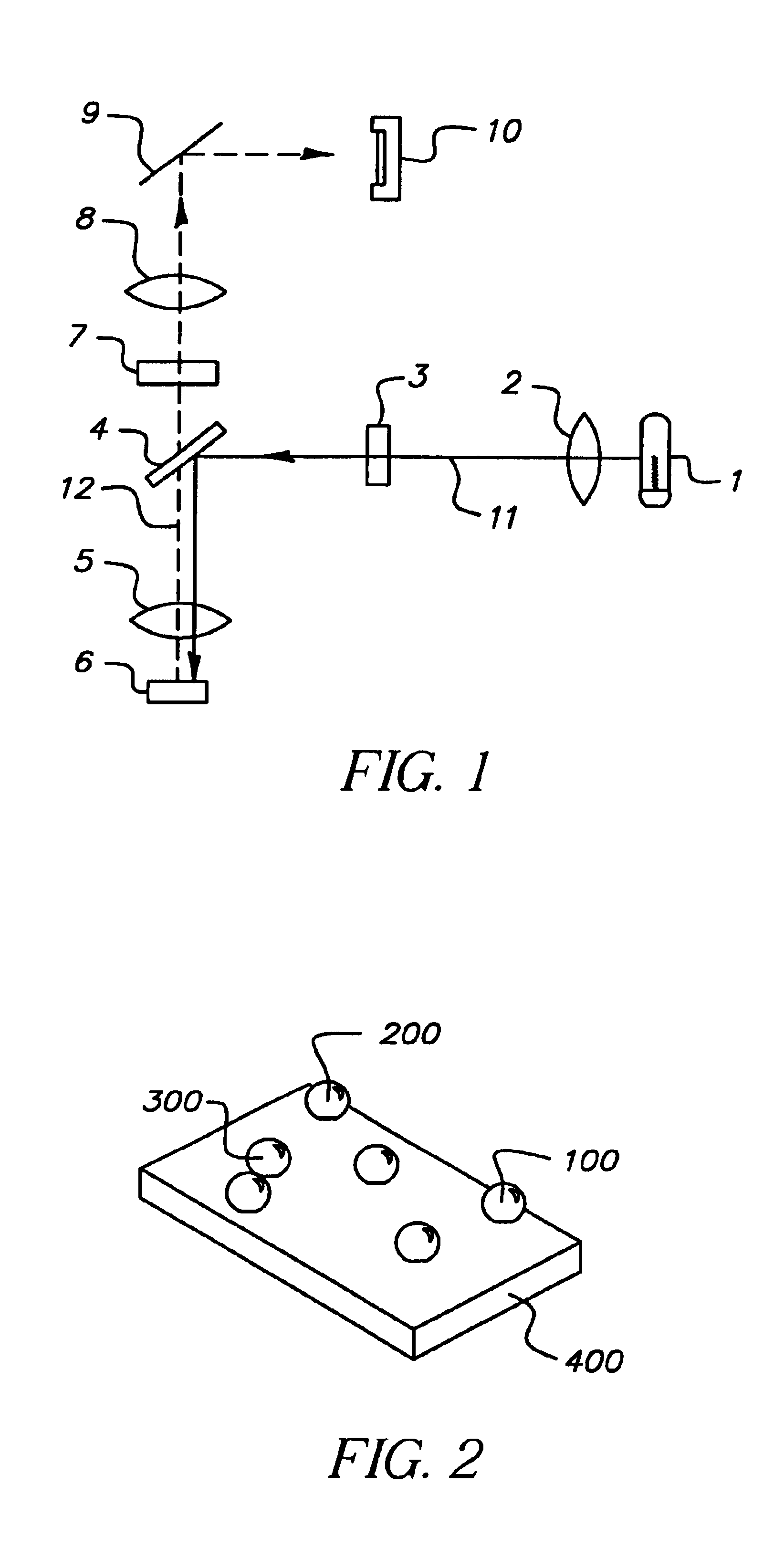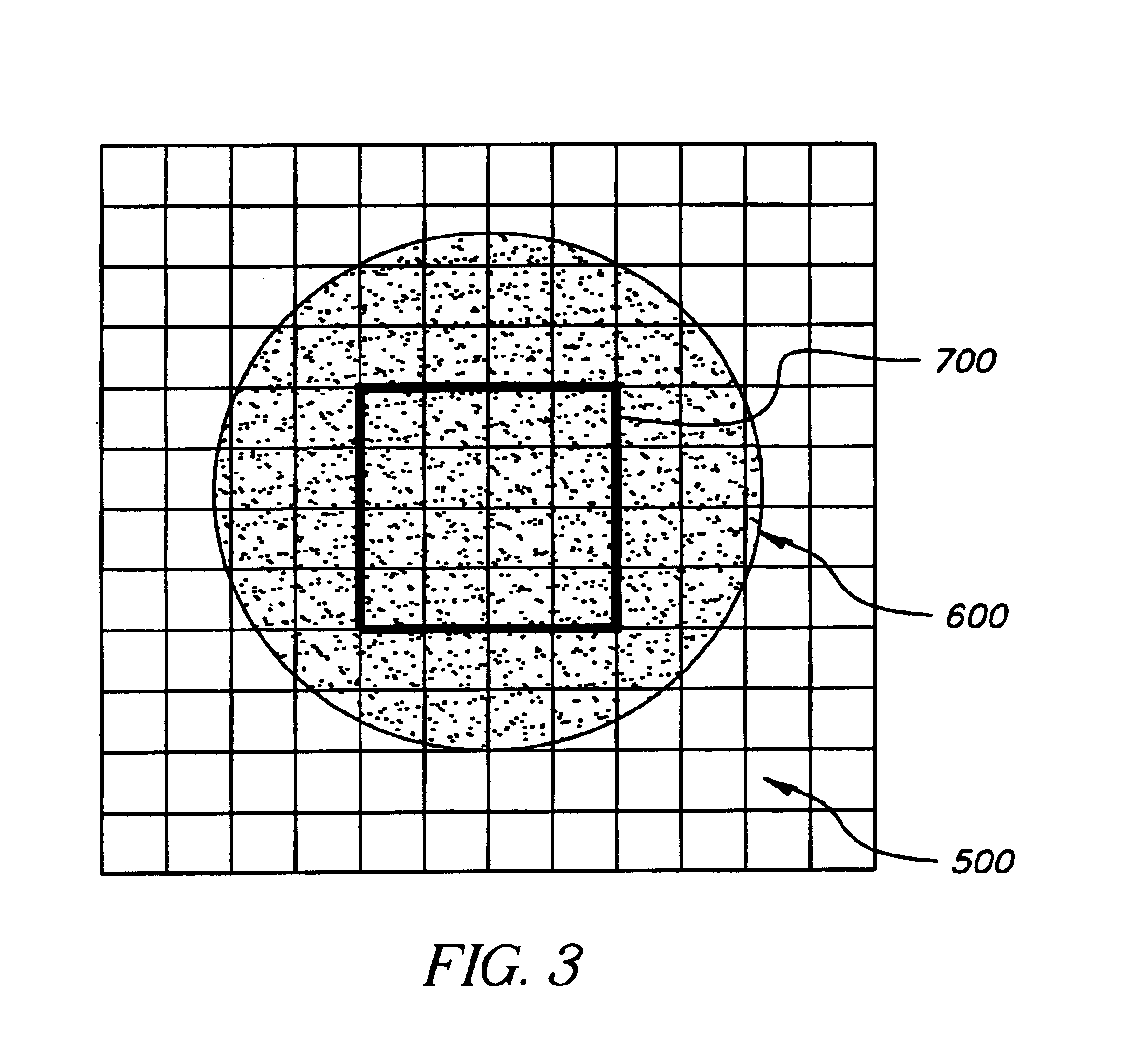Color detection in random array of microspheres
a random array and microsphere technology, applied in the field of microarray sensing technology, can solve the problems of difficult to maintain the uniformity of the hole size and spacing of the hole with this method, the method is expensive, and the range of hole sizes and spacings produced by this method is limited. achieve the effect of simple, cost-effective and efficien
- Summary
- Abstract
- Description
- Claims
- Application Information
AI Technical Summary
Benefits of technology
Problems solved by technology
Method used
Image
Examples
example 1
[0033]This example illustrates the analysis method to detect different levels of magenta colorant and yellow colorant in microspheres loaded with two different levels of magenta and yellow colorants respectively.
[0034]Preparation of Plain (Non-Dyed) Beads
[0035]A. 4.2% aqueous suspension of polystyrene beads prepared by emulsion polymerization and having a mean size of 10 micrometers was obtained from Interfacial Dynamics Corporation, Portland, Oreg.
[0036]B. Preparation of Magenta Colored Beads M1
[0037]A suspension of magenta colored beads M1 was prepared by first dissolving 0.001 gram of Dye 2 in 0.02 grams of toluene and 5 grams of acetone. 5.0 grams of the suspension of non-dyed beads from part A was combined with 3 grams of acetone. This mixture was then added rapidly to 2 grams of the solution of Dye 2 in acetone and toluene while stirring to prepare a suspension of colored beads. The suspension of colored beads was then filtered using a porous cotton filter, poured into a dialy...
PUM
| Property | Measurement | Unit |
|---|---|---|
| diameter | aaaaa | aaaaa |
| diameter | aaaaa | aaaaa |
| size | aaaaa | aaaaa |
Abstract
Description
Claims
Application Information
 Login to View More
Login to View More - R&D
- Intellectual Property
- Life Sciences
- Materials
- Tech Scout
- Unparalleled Data Quality
- Higher Quality Content
- 60% Fewer Hallucinations
Browse by: Latest US Patents, China's latest patents, Technical Efficacy Thesaurus, Application Domain, Technology Topic, Popular Technical Reports.
© 2025 PatSnap. All rights reserved.Legal|Privacy policy|Modern Slavery Act Transparency Statement|Sitemap|About US| Contact US: help@patsnap.com



